Previous
Everything You Always Wanted to Know About Arco


Your dream house is one step away from you.
Subscribe to our newsletter and get 10% off orders of at least £100,00!
Enjoy it and don’t miss out on our offers and updates.


Firms like Philips, Swatch, Nintendo, Alessi and Apple have a design-driven market approach rather than a user-centred approach, unlike a lot of other businesses. Does this mean they don’t care about their customers? In a way this is true. And how do they manage to satisfy the needs of the market and at the same time be so successful?

These firms don’t intend to satisfy existing market needs (market pull). Their strategy is to break into the market with extremely innovative products – things nobody had even thought of asking for – and to make them indispensable, loading them with symbolic value.
These firms take a flying leap into the future and gain years of advantage over their competitors, who will try to catch them up through incremental innovations, until these pioneers make the next leap. Is it a leap of faith? Certainly not.

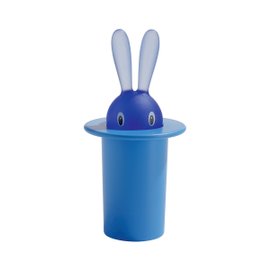

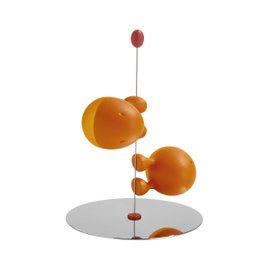



Design-driven firms work with very special designers, real creative antennae which capture the future frequencies of the market and its social and cultural background. These people aren’t clairvoyants or superheroes but consumers within the current market, whose intuitive skills are valued and nurtured by the firm concerned, according to its specific management structure.
First of all, the firm listens to what’s out there. It scours creative hubs, looking for pockets of creative potential, which need to be harnessed and pointed in the right direction. For this reason, because these firms rely on the appeal of their own brand and production, they are able to build up a constellation of designers, who generally come from different backgrounds and fields and have diverse skills and design methods, creating a research field for them to work in.
Steve Jobs relaunched Apple working in partnership with designers from a diverse range of fields: from the entertainment industry to the coloured plastics used in kitchens and bathrooms (Jonathan Ive used to design bathroom fittings and electric toothbrushes before designing the ground-breaking colourful iMac case). So, we see the trend taking shape which will lead the firm to design the most iconic technology of the 2000s, starting from colourful and compact silicon iBooks and iMacs. Think different.
During the 80s Ernesto Gismondi, who later started Artemide, made the most of his business acumen and pushed the experimental Memphis Milano ideas onto the market, bringing about a real change in taste. For years, the Memphis collective, which included top names in the Italian design scene (Ettore Sottsass, Michele de Lucchi, Alessando Mendini and Aldo Cibic just to name a few), met up and churned out creative materials in sharp contrast with the austere minimalist aesthetics of good design. In 1981, the members of the group came out with around a hundred different designs for furniture and other objects, they had a bold line and were extremely colourful, deliberately kitsch and inspired by pop-art.

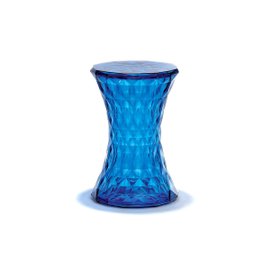
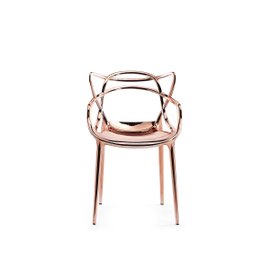
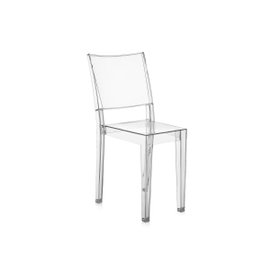
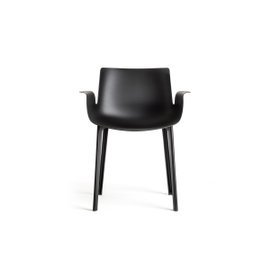
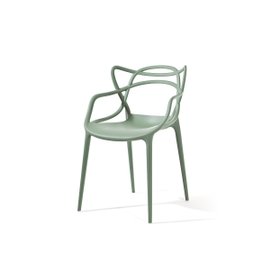
Part of a sort of creative hub, in other words, exposed to the best possible conditions for fostering the creative process; these individuals invent new languages and perspectives. But the key factor that brings everything together is the type of network they belong to which in turn links them to the firm.
New ideas are show-cased at these design hubs and in every other place buzzing with creativity, creating a narrative which transcends the single designers themselves. These new languages are shared and interpreted in turn, until they are refined to such an extent they can undergo a manufacturing process, which will turn them into new technology.
An idea which in the beginning might have been impractical has a chance of slipping through the cracks of the underground design scene, of being introduced into the social imaginary and accepted by the market. So, the future takes shape and what at the beginning seemed impossible looks as if it might be realised in the future. ;
Even if you could associate it with several international brands; it’s this impeccable and unique business model which is behind the success of Italian design.

Efforts to foster research and promote growth in brands like Alessi, Flos, Artemide, Kartell and Olivetti, especially during the aftermath of the Second World War, are not restricted to the firm itself nor can they be traced back to the company’s contacts. In fact, they involve a constantly changing galaxy of architects, suppliers, photographers, critics, curators, editors, craftsmen, artists and designers. The value of the members of this community’ lies partly in their creativity and partly in the mere fact they belong to this precious network.

In general, these efforts nod to new life-styles and suggest new values. And they succeed in getting a foothold; this guarantees a longer life-cycle to the product in question, less dependent on technological upgrades and a sort of “prize” which is seen as a reward for the long design process.
For example, the iconic 9093 kettle designed by Michael Graves (post-modern American architect and professor at Princeton University) for Alessi. The kettle’s popularity captured the attention of the retailer Target, well-known for selling refined pieces at affordable prices. In 1999, Target invited Michael Graves to design a range of products which included a clear reference to the kettle with the little bird on top. To the present day, 9093 by Alessi is still being sold at a much higher rate and at five times the price of any other similar product at Target.
The little bird whistle which cheers our dawn wake-up calls and the eccentric steel silhouette don’t just meet the basic functional requirements of a kettle (to boil water) but broaden what people expect from their breakfasts. Michael Graves’ piece sums up different ideas and discussions on design which occurred during the preceding years. Therefore, the unique character of the piece is the result of a process based in Milan which involves different players and fields of expertise transcending the product itself, and perhaps even the mere subject of design.
Here, the mark of Italianness comes into play, the abstract value of courage and innovation, business models which see designers not only as artists or craftsmen but also as managers and businessmen. A conversation around a delightfully Italian aspect of design.
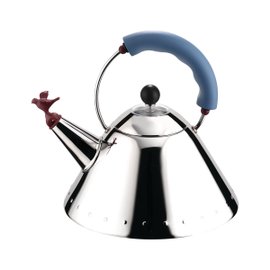
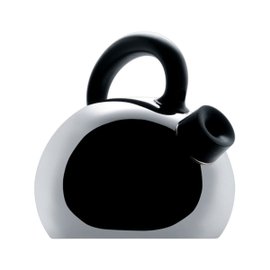
Dining
Alessi
Michael Graves
Dining
Stefano Giovannoni
Winter Decò
Classic Blue - Pantone® 2020
Happy Brunch Express Delivery
Top brand of the Table
Outlet
Gift in prompt delivery
Home Accessories
Gifts
Bathroom
Bathroom New
Design Icons - Bday LoveTheSign Edition
Choose your Design gifts up to 30% off
Kartell
Marcel Wanders
Furniture
Sicily at home
Philippe Starck - Eugeni Quitllet
Best Italian Design
New&Cozy Express Delivery
Top brand Italian Design
LoveTheSign @ Gaudenzi
Italian Design
Design icons
A game of opposites
LOVE DAYS
Philippe Starck
Outdoor
Piero Lissoni
The best of Design
Italian Design’s Top Brand
Back to Work – Design Edition

 Back to
Back to
Size*
Quantity*




